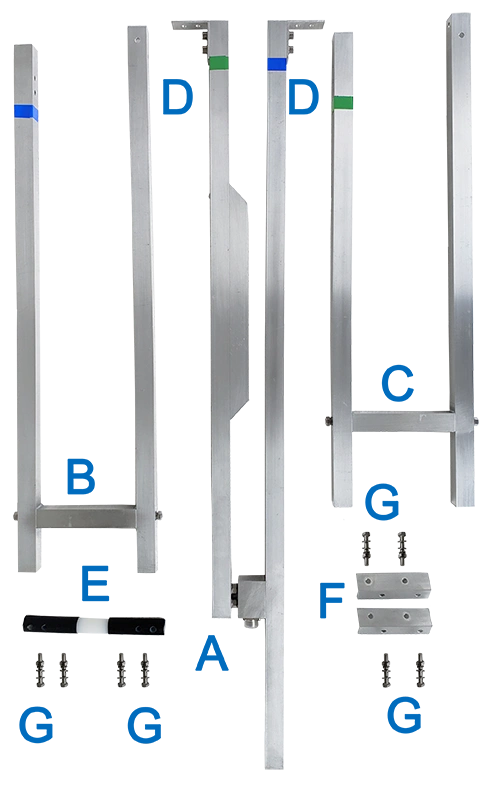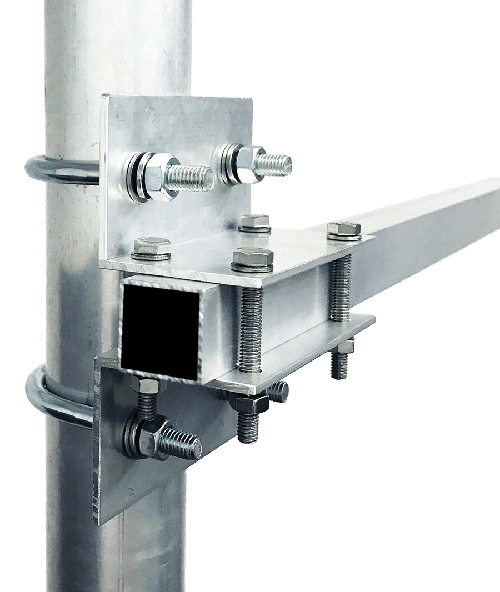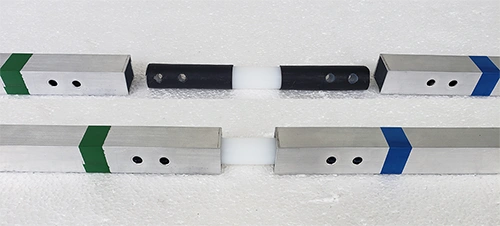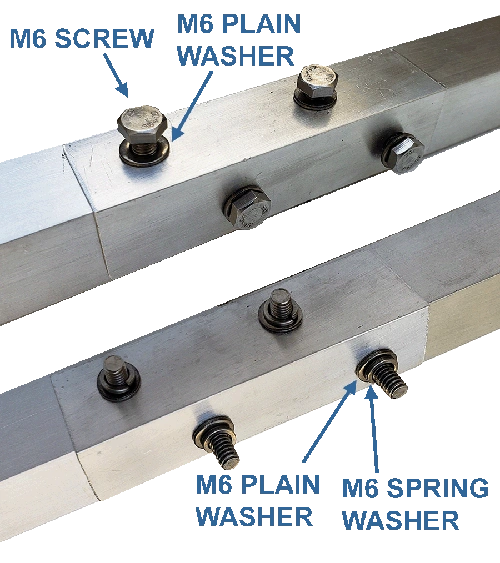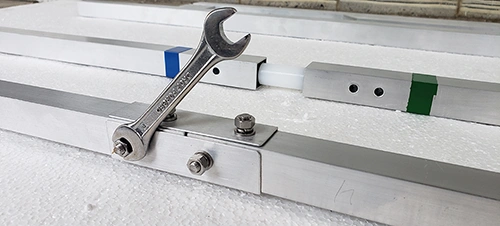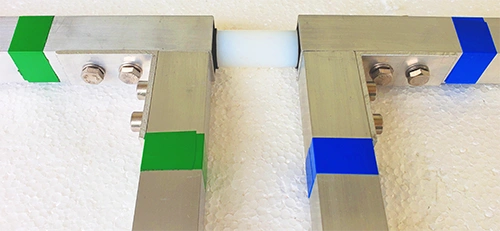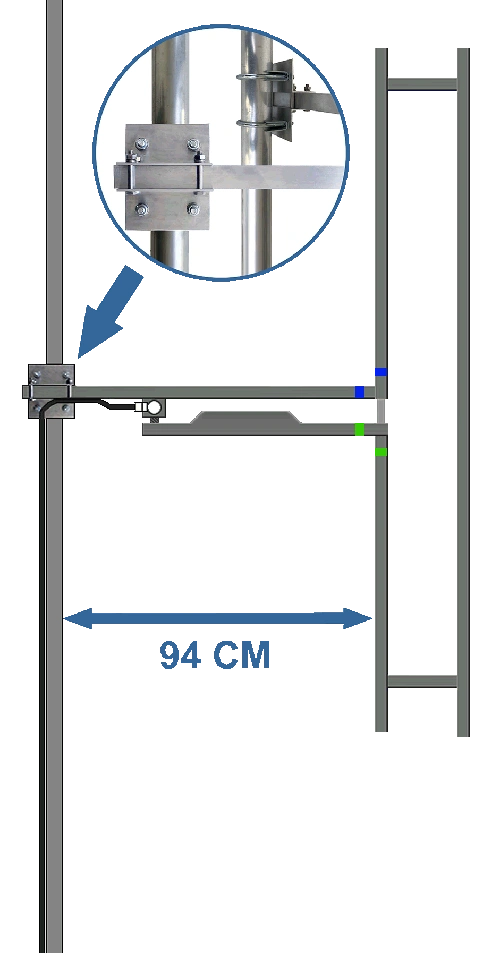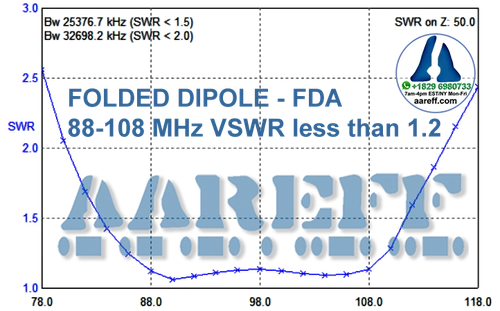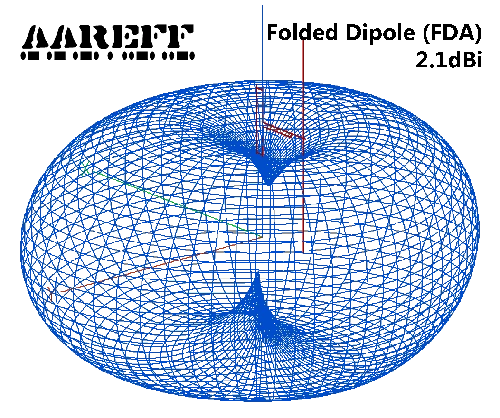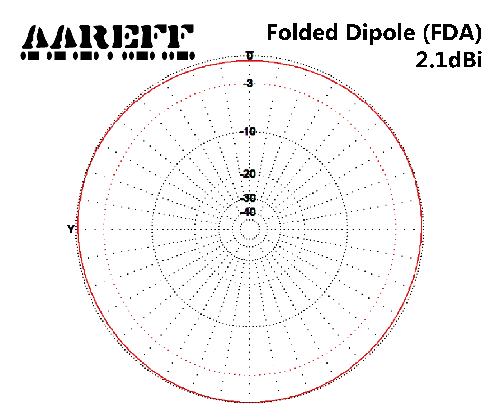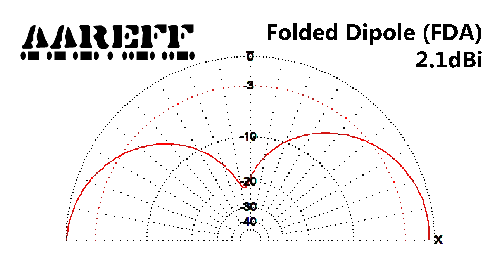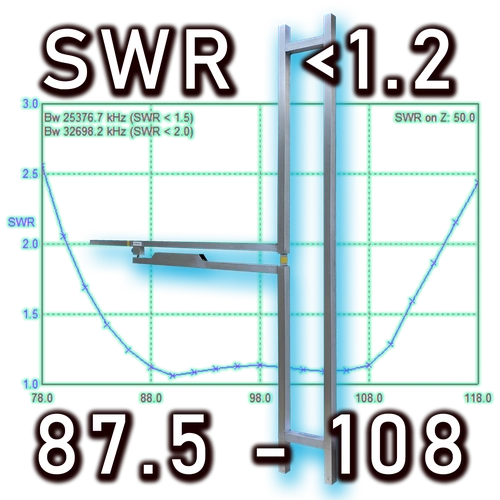
High Power 3kW Broadband FM Dipole Antenna

- 2.2dBi Gain (x1.6 TRANSMITTER POWER)
- SUPER 3kW HIGH POWER CAPABILITY
- VSWR ≤ 1.2 FROM 87.5 TO 108 MHz
- BROADBAND 87.5 TO 108 MHz
- NO TUNING, FULL BAND OPERATION
- AVAILABLE WITH DIN 7-16 CONNECTOR
- LIGHTWEIGHT AT UNDER 3Kg
- EASY ASSEMBLING FOR NOVICES
- EASY INSTALLATION
- PRICE INCLUDES SHIPPING
Designed for our 100kW EIRP System
We originally designed this folded dipole to power our 100kW EIRP package which you can find more details on at https://www.aareff.com/en/complete-fm-radio-station/100000w-eirp/ and a great video showing you how it works at our YouTube channel https://www.youtube.com/watch?v=ad9QGcQx5KU. Bottom line, this antenna had to 1. Handle high power with ease, 2. Had to be stackable to get high gain and 3. Most important of all, it had to be as broadband as possible to make it easy for the customer to install up a huge tower using technicians that are not radio savvy. You know, construction type workers who are brave enough to do the job. We succeeded in all these.
Broadband - 25MHz SWR < 1.5
We started with a regular folded dipole with rounded ends, it was okay and we managed to get reasonable bandwidth, but not levels of 1.0. and 1.1 across the band, more like 1.5. Over several weeks we tried different diameter tubes really thick, really thin, a mix of thick and thin and that made a difference, but not enough. After weeks and weeks cutting and welding aluminum we finally discovered that if we organized the ends, carefully, of the folded dipole as H sections we could increase the bandwidth. We were eventually seeing VSWR of mostly 1.0 and 1.1 across the entire band. This was spectacular.
Stacking for High Gain
As with all dipoles, this is no different. Our folded dipole can be stacked using suitable splitters / phasing harness in 2, 4, 6 and 8 to give gains of over 11dBi, this means with only 8kW of amplifier power an effective isotropic radiated power of 100kW is possible.
Do you want cable for your antenna?
High Power 3kW
There are no coils or capacitors in this design. The two parallel tubes on the boom provide the 50 to 300 ohm matching and also function as a balun. On test the residual current flowing down the outside of the coaxial cable was virtually zero, the balun was working very well. The point is, the whole design is just 25mm square tube, there is nothing to burn or get hot. There is only one insulator that is under RF strain. For this we used Teflon and other materials resistant to high voltage RF which resulted in no problems at all, no heating whatsoever. This antenna handles 3kW with ease, in fact the 3kW limit is set by the 7-16 DIN connector, not the rest of the antenna.
| Gain (Isotropic) | +2.1 dBi |
| Frequency Range | 87 - 109 MHz |
| Bandwidth | +/-12 MHz 1.5 VSWR |
| Construction | Glass Fibre/Aluminum |
| RF Connectors | N type / DIN 7-16 |
| Impedance | 50 ohm unbalanced |
| Polarization | Vertical |
| Maximum RF Power | 0.8kW / 1.6kW / 3kW |
| Weight of Antenna | 2.3Kg |
| Wind Speed Handling | 90 MPH |


 +1 829 698 0733
What Do You Need? Talk To Us
+1 829 698 0733
What Do You Need? Talk To Us






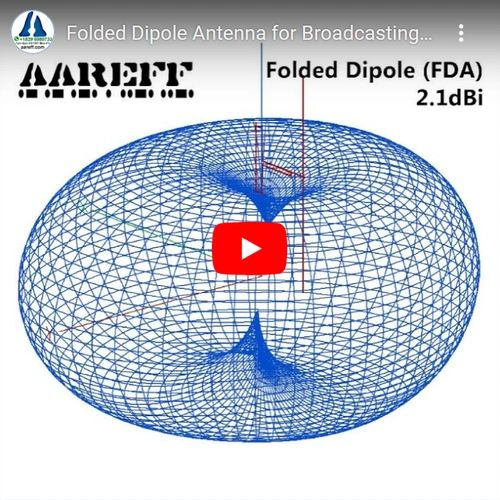
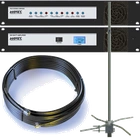
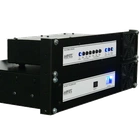
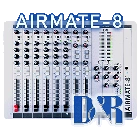
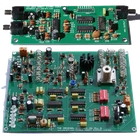
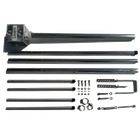
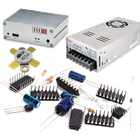



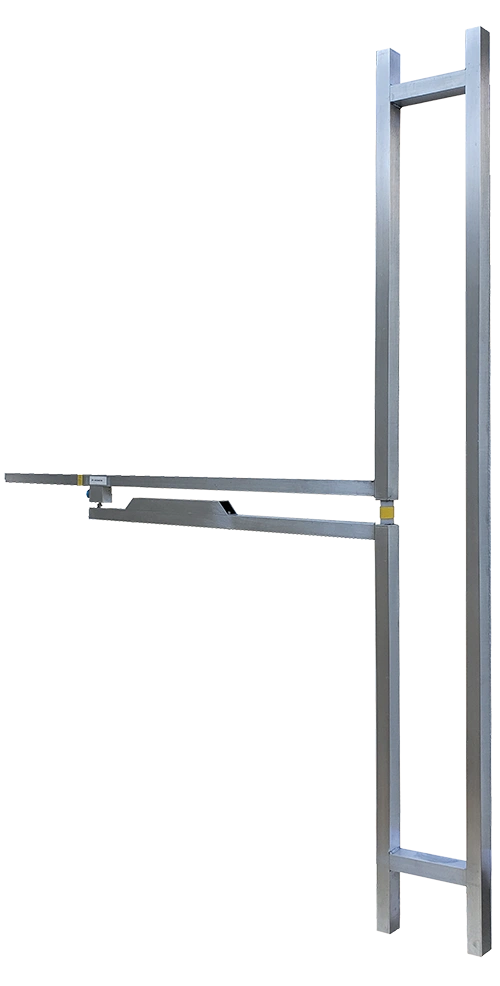
 IMPORTANT!
IMPORTANT! 